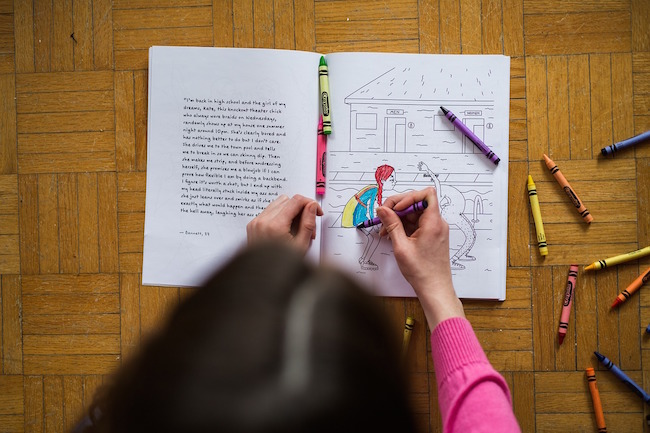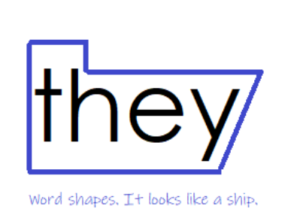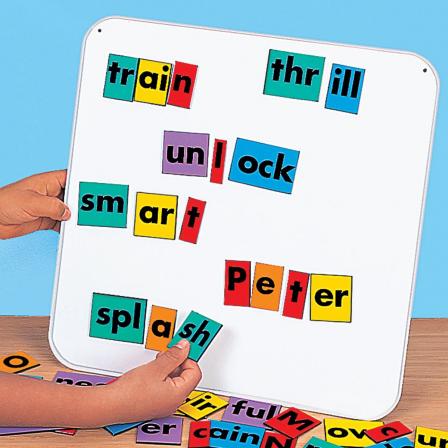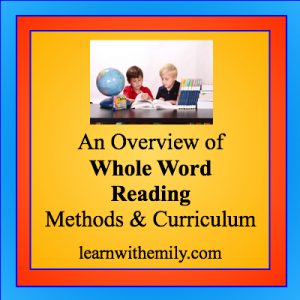Learning how to read is one of the most important things a child will do before the age of 10. That’s because everything from vocabulary growth to performance across all major subjects at school is linked to reading ability. The Phonics Method teaches children to pair sounds with letters and blend them together to master the skill of decoding.
The Whole-word Approach teaches kids to read by sight and relies upon memorization via repeat exposure to the written form of a word paired with an image and an audio. The goal of the Language Experience Method is to teach children to read words that are meaningful to them. Vocabulary can then be combined to create stories that the child relates to. Yet while there are various approaches to reading instruction, some work better than others for children who struggle with learning difficulties.
Dyslexia can cause individuals to have trouble hearing the sounds that make up words. This makes it difficult for them to sound out words in reading and to spell correctly. Dyslexic learners may therefore benefit from a method that teaches whole-word reading and deemphasizes the decoding process.
Orton-Gillingham is a multi-sensory approach that has been particularly effective for dyslexic children. It combines visual, auditory, kinesthetic, and tactile learning to teach a program of English phonics, allowing children to proceed at a pace that suits them and their ability.
No two students will learn to read in exactly the same way, thus remaining flexible in your approach is key. It can be useful to combine methods, teach strategies and provide the right classroom accommodations, particularly for students who have specific learning differences. Remember that motivation is key and try to be patient so as to avoid introducing any negative associations with school and learning.
Learn more about motivating children to read, different kinds of dyslexia, identifying dyslexia, the Orton-Gillingham approach to reading, and strategies to help children with dyslexia in these posts.
Pre-literacy skills
Children begin acquiring the skills they need to master reading from the moment they are born. In fact, an infant as young as six months old can already distinguish between the sounds of his or her mother tongue and a foreign language and by the age of 2 has mastered enough native phonemes to regularly produce 50+ words. Between the ages of 2-3 many children learn to recognize a handful of letters.
They may enjoy singing the alphabet song and reciting nursery rhymes, which helps them develop an awareness of the different sounds that make-up English words. As fine motor skills advance, so does the ability to write, draw and copy shapes, which eventually can be combined to form letters.
There are plenty of ways parents can encourage pre-literacy skills in children, including pointing out letters, providing ample opportunities for playing with language, and fostering an interest in books. It can be helpful to ask a child about their day and talk through routines to assist with the development of narrative skills.
Visit your local library and bookstore as often as possible. The more kids read with their parents, teachers and caregivers, the more books become a familiar and favorite pastime. Young children should be encouraged to participate in reading by identifying the pictures they recognize and turning the pages.
Discover more about fostering pre-literacy skills.
1. The Phonics Method
The smallest word-part that carries meaning is a phoneme. While we typically think of letters as the building blocks of language, phonemes are the basic units of spoken language. In an alphabetic language like English, sounds are translated into letters and letter combinations in order to represent words on the page. Reading thus relies on an individual’s ability to decode words into a series of sounds. Encoding is the opposite process and is how we spell.
The Phonics Method is concerned with helping a child learn how to break words down into sounds, translate sounds into letters and combine letters to form new words. Phonemes and their corresponding letters may be taught based on their frequency in English words. Overall there are 40 English phonemes to master and different programs take different approaches to teaching them. Some materials introduce word families with rhyming words grouped together. It’s also possible to teach similarly shaped letters or similar sounding letters together.
The Phonics Method is one of the most popular and commonly used methods. In the beginning progress may be slow and reading out loud halting, but eventually the cognitive processes involved in translating between letters and sounds are automatized and become more fluent. However, English is not always spelled the way it sounds. This means some words can’t be sounded out and need to be learned through memorization.
2. The Whole-word Approach
This method teaches reading at the word level. Because it skips the decoding process, students are not sounding out words but rather learning to say the word by recognizing its written form. Context is important and providing images can help. Familiar words may initially be presented on their own, then in short sentences and eventually in longer sentences. As their vocabulary grows, children begin to extract rules and patterns that they can use to read new words.
Reading via this method is an automatic process and is sometimes called sight-reading. After many exposures to a word children will sight-read the majority of the vocabulary they encounter, only sounding out unfamiliar terms.
Sight-reading is faster and facilitates reading comprehension because it frees up cognitive attention for processing new words. That’s why it is often recommended that children learn to read high frequency English vocabulary in this way. The Dolch word list is a set of terms that make-up 50-75% of the vocabulary in English children’s books.
Learn more about teaching sight-reading and the Dolch List.
3. The Language Experience Method
Learning to read nonsense words in a black-and-white activity book is not always the most effective approach. The Language Experience Method of teaching reading is grounded in personalized learning where the words taught are different for every child. The idea is that learning words that the child is already familiar with will be easier.
Teachers and parents can then create unique stories that use a child’s preferred words in different configurations. Children can draw pictures that go with them and put them together in a folder to create a special reading book. You can look for these words in regular children’s fiction and use them to guess at the meaning of unknown words met in a context – an important comprehension strategy that will serve kids in later grades.
8 Tips for parents
No matter which method or methods you use, keep these tips in mind:
-
Read as often as possible. Develop a routine where you read a book together in the morning or in the evening. You may start by reading aloud but have the child participate by running a finger along the text. Make reading fun, include older children and reserve some family reading time where everyone sits together with their own book to read for half an hour—adults included!
-
Begin with reading material that the child is interested in. If he or she has a favorite subject, find a book full of related vocabulary to boost motivation.
-
Let the child choose his or her own book. When an individual has agency and can determine how the learning process goes, he or she is more likely to participate. Take children to libraries or bookstores and encourage them to explore books and decide what they would like to read.
-
Consider graded readers. As a child develops his or her reading ability, you will want to increase the challenge of books moving from materials that present one word per page to longer and longer sentences, and eventually, paragraph level text. If you’re not sure a book is at the right level for your child, try counting how many unfamiliar words it contains per page. You can also take the opposite approach and check to see how many Dolch words are present.
-
Talk about what you see on the page. Use books as a way to spur conversation around a topic and boost vocabulary by learning to read words that are pictured but not written. You can keep a special journal where you keep a record of the new words. They will be easier to remember because they are connected through the story.
-
Avoid comparisons with peers. Every child learns to read at his or her own pace. Reading is a personal and individual experience where a child makes meaning and learns more about how narrative works as he or she develops stronger skills.
-
Don’t put too much pressure. Forcing a child into reading when he or she is not ready can result in negative reactions and cause more harm than good.
-
Do speak with your child’s teacher. If your child doesn’t enjoy reading and struggles with decoding and/or sight reading, it may be due to a specific learning difficulty. It’s advised you first discuss it with your child’s teacher who may recommend an assessment by a specialist.
Learning difficulties
If reading is particularly challenging and your child isn’t making progress there could be a specific learning difficulty such as dyslexia or ADHD that is causing the problem. Conditions like dyslexia are hereditary and it’s not unlikely that another family member will also have a hard time with reading. Visual processing, visual impairment and hearing impairment can also cause reading difficulties.
In the case of the latter, if you can’t hear the words it’s hard to identify the sounds inside them and develop an understanding of phonics. Hearing impairment based reading difficulties are a common issue in teaching children with Down syndrome to read.
Orton-Gillingham
Orton-Gillingham is an approach designed to help struggling readers. It’s based on the work of Dr. Samuel Orton and Dr. Anna Gillingham and has been in use for the past 80+ years. Orton-Gillingham allows every child to proceed at a pace that is right for him or her and introduces English phonics in a multi-sensory way.
For example, children may see a letter combination, say it aloud and trace it in the air with their finger. Rich sensory experiences help to enhance learning and can be provided using different materials like drawing in sand, dirt, shaving cream or chocolate pudding. Children may form letters using their hands or move in a rhythmic way that mimics the syllables in a word. Singing, dancing, art activities and plenty of repetition develop reading skills.
Learn more in this post on taking a multi-sensory approach to reading.
Touch-typing and multi-sensory reading
TTRS is a touch-typing program that follows the Orton-Gillingham approach and teaches reading in a multi-sensory way. Children see a word on the screen, hear it read aloud and type it. They use muscle memory in the fingers to remember spelling – which is particularly important for children who have dyslexia— and practice with high frequency words that build English phonics knowledge and decoding skills. Learning happens via bite-size modules that can be repeated as often as is needed. Progress is shown through automatized feedback and result graphs build confidence and motivation.
Reading wars, Whole word VS. Phonics, whole language advocates vs. phonetics enthusiasts…
Who would imagine that learning to read could be such a controversial topic?
But sadly, it is!
And I use the word SADLY for a good reason: Because the ones that normally pay the consequences of this disagreement are our children!
In this article we will look at the differences between the whole word approach and the phonics approach, so you can learn the ins and outs of this hot debate and form your own opinion.
If your child is learning to read, this is a crucial topic for you to understand as a parent. The reading success of your child can depend very much upon the actual approach used to teach your child to read; and, as you will discover on this article, schools do not always use the most effective method.
When it comes to teaching children to read there are two main teaching methods.
These two main methods are the whole word approach (also called the “sight words” approach) and the phonetic or phonics approach.
Some prefer the whole word method, while others use the phonics approach.
There are also educators that use a mix of different approaches.
But, who is right?
The Whole Word Approach
The whole word approach relies on what are called “sight words”. This method basically consists of getting children to memorize lists of words and teaching them various strategies of figuring out the text from a series of clues. Using the whole word approach, English is being taught as an ideographic language, such as Chinese or Japanese.
One of the biggest arguments of whole word advocates is that teaching to read using phonics breaks up the words into letters and syllables which have no actual meaning. Yet they fail to acknowledge that once the child is able to decode the word, they will be able to actually read that entire word, pronounce it and understand its meaning. So, in practicality, this is a very weak argument, from our point of view.
Unlike Chinese, English is an alphabet-based language. This means the letters of the English alphabet are not ideograms (also called ideographs), like Chinese characters are.
An ideogram (or ideograph) is a graphic symbol that represents an idea or a concept. Simply put, ideograms are like logos.
So, in a way, you could say that in the Chinese language you need to teach children to memorize “logos” and the meaning of each of them.
It is not logic to think that English should be taught using an ideographic approach…
So, the very popular reading programs that use a whole word approach simply get children to memorize words using different strategies, but without teaching any proper decoding methodology.
Think of the example we used before of the logos and the Chinese language.
Besides, there is no scientific evidence to suggest that teaching your child to using the whole word approach is an effective method. However, there are large numbers of studies which have consistently stated that teaching children to read using phonics and phonemic awareness is a highly effective method.
The Whole-Word Approach in Schools…
So, is your child learning to read using sight words? Or maybe a mixture of phonetics and sight words? What is the standard approach in our education system?
Well, every country – and even every educator / school – is different.
However, in English speaking countries in general -with the exception of the UK, which has been encouraging schools to adopt a systematic synthetic phonics approach since 2011- reading instruction is normally more heavily weighted towards the teaching of sight words, emphasizing the learning of “word shapes”.
Despite all the evidence to suggest otherwise, the whole word method of teaching still dominates how reading is taught at schools.
Why? Well, our guess is that children can appear to make fast progress with the whole language approach, and that makes everybody happy…
That is until their progress stalls, which is what usually happens, because with this method many children do not learn the relationships between letters and sounds correctly.
Some children can finally understand the letter-sound relationships from the words they have learned, but unfortunately many children aren’t able to figure this out. So, they are left with only one strategy for learning to read: memory and continuous repetition.
This is a very poor strategy these children are left with, in our opinion.
On the other hand, the reading ability of children is normally exaggerated on whole word programs as the texts used are very repetitive and extremely predictable. The children know what to expect. So… They are basically guessing!
When children are presented with a less predictable text without pictures, they struggle with words they had previously been able to figure out in a repetitive text with illustrations.
Another strategy used in whole word programs consists of focusing on word shapes.
Just have a look at this image. This is a “reading strategy” used on whole word programs.
Encouraging children to learn to read by looking at word shapes is completely madness! They are told to look at words as if they were “pictures”, focusing on the overhangs in the shapes of words! This does not apply for the English language!! Again, this is a method used for ideographic languages, such us Chinese or Japanese.
It does not make sense! There are just so many words with very similar shapes!
For example, look at this:
- hat vs. bat
- tree vs. free
- fall vs. tall vs hall
- hunt vs. hurt vs. hard
And the list goes on and on and on… Honestly, we could find thousands of words that have similar shape if we had the time to do this exercise!
The Whole- Word Method and Spelling
Even if a child has some early success learning to read using whole words programs, it gets him/her into the habit of ignoring the letters in words. This causes serious reading problems later on (when texts get more complicated), including spelling problems.
Another strategy that we are told to do on whole word programs is encouraging our children to look at the pictures in storybooks to “guess” or “predict” words.
-
Can they use the picture to help?
-
Can they look at the initial letter and predict what word would make sense that starts with that letter?
-
What word makes sense based on the context?
A little bit of history on the Whole-Word Approach
The main idea behind this theory is that if you see words enough number of times, you eventually store them in your memory as visual images.
They also embrace the idea that kids can naturally learn to read if they are exposed a lot of books.
Since the 1980s, these beliefs had strongly influenced the way children in North America and most English speaking countries are taught to read and write.
These ideas start to emerge in the 1970’s, and they become extremely popular for teaching reading in the 80’s and 90’s.
There is a strong focus on meaning, rather than sounds.
The Phonics Approach
At the opposite end of the spectrum, we find reading instruction based on phonemic awareness and phonics.
The phonics approach focuses on the sounds in words, which are represented by the letters (or groups of letters) in the alphabet.
There is a myriad of methods and systems within the phonics approach itself, but the the two main methodologies for teaching phonics are Synthetic and Analytic phonics.
Even though they both have the label “Phonics” attached to them, they are in fact quite different ways for teaching children to read.
However, for the sake of this article (and to keep things simple) we will just say that the main difference is that in the Synthetic Phonics approach skills are taught in a highly structured ‘systematic’ way.
Children start with very simple sounds and decoding regular words. Gradually, they are introduced to more complex sounds (such us letter combination sounds) and to irregularities and exceptions. Every step of the way is planned, and children only move to the next stage of phonics once they have mastered the previous one.
In the Analytic Phonics approach, reading instruction is less structured, and learning happens in a more ‘embedded’ fashion. Children are encouraged to analyze groups of whole words to identify similar sounds and letter patterns. Instruction relies a lot on the analysis of “families of words”.
For instance, the family of words ending up in -all, such us “tall, fall, mall, hall, small”, or the family of words ending up in -at, such “mat, cat, rat, bat, fat, pat”.
If you are interested in knowing more about the differences between analytics and synthetic phonics, you can check this video.ç
<iframe width=”560″ height=”315″ src=”https://www.youtube.com/embed/twDjIsFkhFM” title=”YouTube video player” frameborder=”0″ allow=”accelerometer; autoplay; clipboard-write; encrypted-media; gyroscope; picture-in-picture” allowfullscreen></iframe>
Is there a Winner in the Reading Wars?
What Research / Modern Science has to say…
The best way to put an end to this controversy and start making decisions that are RIGHT for our kids – and not based on personal preferences or ideology- is by looking at what research and scientific studies have to say.
However, you may think that if opinions on the topic are still so divided, then it must be that the results of these studies are somehow inconclusive.
Well, not really…
Look at these statements by the US National Reading
“Teaching children to manipulate phonemes in words was highly effective under a variety of teaching conditions with a variety of learners across a range of grade and age levels and that teaching phonemic awareness to children significantly improves their reading more than instruction that lacks any attention to Phonemic Awareness.”
“Conventional wisdom has suggested that kindergarten students might not be ready for phonics instruction, this assumption was not supported by the data. The effects of systematic early phonics instruction were significant and substantial in kindergarten and the 1st grade, indicating that systematic phonics programs should be implemented at those age and grade levels.”
^* Report of the National Reading Panel. Teaching children to read: An evidence-based assessment of the scientific research literature on reading and its implications for reading instruction. Excerpts from the meta-analysis of over 1,900 scientific studies.
Overwhelmingly research has found that phonemic awareness and phonics is a superior way for teaching children to read!
But wait there is more…
Modern Scientific Research on the Brain and How we learn to read
For a very long time many experts have embraced the idea that we store words in our memory in the same way we store visual memories, such us faces or objects. That belief is at the core of the whole word approach.
And, in fact, many reading experts still believe this is the cse.
However, modern scientific research proves otherwise…
But before I tell you how we actually store words in our memory, look at the following factors already pointing out at how visual memory -contrary to still popular belief – is NOT involved:
-
We can read mixed case letters without difficulties.
-
We can read words with different fonts, in print and cursive, and handwritting without difficulties.
-
Word recognition works faster than object recognition, indicating that we are using different storage and retrieval processes.
Let me tell you about the sound scientific evidence now…
Brain scans show that the parts of the brain activated while performing visual memory tasks are different than the parts of the brain activated while reading…
Moreover, scientists in the visual memory area (not related to reading research, therefore unbiased) have indicated that we don’t have the cognitive capacity to remember 30 – 90,000 words for immediate retrieval.
As reading instruction still assumes that we store words as visual images, students who struggle to remember words are many times presumed to have poor visual memory.
This couldn’t be further from the truth. There is only a small relationship between visual memory and our capacity to store words for immediate retrieval while reading.
However, there is a very strong relationship between HEARING skills and our capacity to store words for immediate retrieval while reading (fluent reading capacity).
To be more specific, children that have been trained to hear the actual sounds that form words (phonemic /phonological skills) and are capable to recognize and store those common strings of sounds and visually link them to the letters / words they know become fluent readers.
There is no evidence to suggest that visual memory has a role in word recognition /reading fluency once the letters and the connection between letters and sounds have been learned.
If there seems to be a winner on the ‘Reading Wars’, why do we keep arguing?
Phonics instruction cons…
These are the main arguments against phonics instruction:
- Children only read phonics books: This is one of the main pillars of a proper phonics system. Children should only attempt to read books that are in line with their level of phonics. Otherwise, it is overwhelming for them and can get confused, since they may be exposed to too many exceptions and irregularities. While this is true, that doesn’t mean that parents can’t read more difficult books to their children. And, in fact, they are encouraged to do so.
- Phonics doesn’t help with reading comprehension. Besides, teaching to read using phonics breaks up the words into letters and syllables, which have no actual meaning. However, once the child is able to decode the word, he/she will be able to actually read that entire word, pronounce it and understand its meaning.
- Children learn to read naturally, therefore they don’t need tedious phonics instruction. Whereas it is truth that some children can learn to read by themselves, most won’t be able to figure it out. Besides, there is no harm in receiving phonics instruction for those that are able to learn to decode by themselves.
- There are just too many exceptions and irregularities in English. While it is true that English is full of irregularities and exceptions, there are less of these than what we are led to believe. Besides, there are some rules, patterns and tips and tricks that apply to those “irregular” words that certainly do help in the process of learning to read.
So, saying that phonics has won the war is quite far from what happens in reality.
As we stated at the beginning of the article, there are different ways for teaching phonics.
What our schools have evolved to do to keep both sides of the war happy is establishing a “balanced literacy” strategy that combines both whole word and phonics principles.
What in practicality ends up happening is that there is only a little bit of phonics instruction here and there, rather than a proper curriculum based on phonics.
That is an ineffective method for teaching phonics, and certainly doesn’t work. And this is precisely the sort of evidence that whole word enthusiasts hold on to.
Final thoughts on the Reading Wars
The debate is still hot. This is bizarre as, in our opinion, based on the latest scientific evidence, the number one skill that we need to develop in our children is phonemic awareness.
This way we would have far fewer students with reading difficulties.
And, after having developed strong phonological / phonemic awareness skills, using a proper phonics approach (and not just a little bit of phonics instruction here and there) seems like the way to go.
Free Resources you may be interested in!
Phonemic Awareness Activity Worksheets
Nursery Rhymes Ebook
44+ English sounds chart
List of CVC Words
В последнее время меня стала увлекать тема обучения детей чтению на английском языке: я пересматриваю свои прошлые наработки, без сожалений избавляюсь от отжившего и с удовольствием пополняю свою базовую коллекцию новым. Видимо, эта тема небезынтересна и вам, но, судя по большому количеству просмотров и отсутствию комментариев к теме форума «Самые эффективные способы научиться читать на английском», готовых ответов у вас нет.
Между тем, вопросы заданы абсолютно правомерные. Педагогам известно, что один из самых трудных аспектов, связанных с обучением английскому языку, является именно обучение чтению. Говоря простым языком, можно обозначить проблему следующим образом: в английском языке слишком много правил чтения для того, чтобы их игнорировать, но при этом они не достаточно часто соблюдаются для того, чтобы им безоговорочно следовать. Эта дуальность нашла отражение и в школьной программе: в сегодняшних школах прослеживаются две чётко разграниченные тенденции.
Одних учеников совсем не учат читать — вместо этого их внимание акцентируется на повторении, запоминании и развитии разговорных навыков. Этот метод получил название «метода обучения чтению целым словом» и он применяется даже к новорожденным детям (см. гостевой пост Марии на эту тему). У школьников, которые «обучались» чтению по этому методу, как правило, довольно сносное — а порой и вовсе удивляющее своей чистотой — произношение и они могут что-то сказать. Но при этом они совершенно не умеют ни читать, ни (как правило) писать.
Других школьников (справедливости ради надо заметить, что сейчас таких меньшинство, т.к. образовательная система накренилась в сторону коммуникативности) обучают правилам чтения. Отмечу, что дефицит правил чтения на уроках английского характерен не только для России, но и для англоговорящих стран. Например, вот как обстоит ситуация в Штатах:
Much research has been done to find a sound basis for teaching children to read. Today, there are two main approaches to reading instruction. The first approach is commonly referred to as the whole word method or whole language. The second is a more traditional method called phonics.
Whole-word reading instruction is not only the most widely used method in the United States, but for over a decade has been the dominate teaching approach in most English-speaking countries. The whole word method is based on the theory that that children should learn to read in a way similar to how they learn to speak. The main idea behind this approach is that reading is natural. Whole word requires children to memorize thousands of words, each as a discrete and separate unit.
This method stresses reading aloud from children’s literature. The sounding out of words is not taught. Instead, children are encouraged to sight-read words. advocates argue that the whole sounding out of words is cumbersome, time consuming and unnecessary. As reading is supposed to be just like learning how to speak, the child needs to be exposed to good children’s literature, using books and stories which use natural or «normal» language.
One of the problems with whole word learning is that there are more than 500,000 words in the English language. By the time children complete the fourth grade they may be able to recognize only around 1,400 simple words. Children should not be expected to guess words based on the context of a story. This method will not produce good readers. Instead of merely memorizing words, children should learn how words work, how they are put together and how they sound. Knowing the sounds of the alphabet and learning how to properly piece letters and sounds together is much more beneficial to children than simply memorizing words.
The other method used to teach reading is phonics. The phonetic approach is quite different from whole word. Phonics is based on sounding out and blending letters. With phonics, children can read and understand as many words as they have in their spoken vocabulary. They learn the 44 phenomes, or sounds of the alphabet. Once they know the sounds of the alphabet, they can break down multi-syllabic words into their discrete sounds. Phonics instruction teaches children how to use letter-sound relations to read or spell words and how to manipulate phenomes in spoken syllables and words.
Phonics advocates believe children should know how the sounds on words work before they learn to read. Children who have phonemic awareness skills will have an easier time learning to read than children who have little or none of these skills. The main focus of phonics is to help children understand how letters are linked to sounds to form letter-sound correspondences and spelling patterns and to help them learn how to apply this to their reading. Since there are 26 letters in the English alphabet but there are 44 sounds to the alphabet, phonics is a much easier and more efficient approach to reading instruction.
Learning to read can be a very difficult task for some children. Phonics is one key that simplifies this task. While whole word requires children to memorize hundreds of words, phonics helps children sound out words. There is no guesswork with the phonics method, whereas whole word requires children to guess words based on the context in which they are used. While it is good for children to be exposed to literature and encouraged to read books, this alone is not a good means to teach reading. If children know the sounds of the alphabet and can manipulate and put letters together, they will be able to read many more words and will greatly enhance their reading fluency and comprehension. Reading instruction that teaches the rules of phonics clearly will ultimately be more successful than teaching that does not.
(Прочитать всю статью целиком вы можете здесь).
Как видите, автор статьи видит решение проблемы безграмотности во внедрении в школах звукового метода обучения грамоте (Phonics). В сети можно найти множество материалов, позволяющих сделать это весело и интересно, превратив занятие в игру.
В одной из ближайших заметок я собираюсь дать обзор ресурсов, которыми пользуюсь сама, а пока хочу обратить ваше внимание на недостатки этого метода. Во-первых, направляя фокус урока на такие «мелочи», как сочетания букв, регулярность появления одних и тех же звуков в одних и тех же положениях, вы замедляете темп занятия. Соответственно, и прогресс идёт медленнее — а мы все знаем, как младших школьников демотивирует отсутствие быстрого результата.
Во-вторых, применение звукового метода обучения грамоте требует тщательнейшего подбора материалов. Поставив фонетику во главу угла, вы уже не сможете принести своим учащимся любой простой короткий текст для чтения — вам придётся самостоятельно сочинять или приобретать такие тексты, каждое слово которых будет состоять только из изученных звуков. А это не только очень трудоёмко для учителя, но и…
В-третьих, когда материалы содержат исключительно знакомые явления и ничего нового — это безумно скучно. Имея дело только с «причёсанными», выверенными и тщательно отфильтрованными материалами, ученики начинают скучать — скучать, не смотря на игровую форму, широкую улыбку учителя и прочие атрибуты бодрого фасада — ведь они лишены каких бы то ни было трудностей, а следовательно, и пространства для роста.
Таким образом, оба подхода к обучению ребёнка чтению имеют свои плюсы и минусы. Что касается меня, то я не являюсь фанатом ни метода обучения чтению целым словом, ни звукового метода в чистом виде. В своей работе я применяю элементы обеих методик, беря лучшее из каждой. А о том, как именно я это делаю, речь пойдёт в другой раз.
А какой подход применяете в свой работе вы, уважаемые учителя?
Практика обучения чтению во втором классе. Комплексный подход – комбинация традиционного метода и метода целого слова (the whole word method).
Чтение – это самостоятельный вид речевой деятельности, связанный с восприятием и пониманием информации, закодированной графическими знаками.
Во втором классе начальной школы, на первом году изучения иностранного языка, закладываются основы этого важного вида речевой деятельности. В течение первого года обучения учащиеся должны овладеть буквами алфавита английского языка, усвоить звуко — буквенные соответствия, уметь читать вслух и про себя слова, сочетания слов, отдельные фразы и короткие связные тексты, построенные на программном языковом материале.
Личный опыт преподавания в начальной школе показал мне, что при обучении чтению второклассников очень эффективно комбинировать два метода обучения чтению
1. метод целого слова (the whole word method), который предлагает учебник Millie (авторы С.И.Азарова и др.) и
2. традиционный метод – звуки, транскрипция, правила чтения (тот метод, который предлагают нам большинство учебников и авторов, например И.Н.Верещагина).
Сочетание этих методов оправданно, поскольку они гармонично взаимодополняют друг друга и компенсируют недостатки каждого отдельного метода.
Итак, метод целого слова основан на том, что у детей младшего школьного возраста гораздо лучше развита память, чем аналитические способности, и поэтому им легко просто запомнить написание и соответственно чтение простейших слов, которые они учат устно. Таких как цифры, цвета, школьные принадлежности, игрушки, названия животных, простейшие глаголы и т.д. Число таких просто-запоминаемых слов, по мнению авторов учебника Millie, насчитывает не менее 1000. Слово или даже небольшая фраза (например How old are you?) запоминается а потом узнается целиком, без вычленения отдельных его составляющих (букв, слов, словосочетаний). Новые слова учатся с помощью карточек со словами и фразами. Используются разнообразные игры: соотнесение слова и картинки, угадай пропавшее слово и пр. Детям такой процесс обучения очень нравится, игра на этом начальном этапе — это весело и эффективно. Традиционный же метод обучения чтению для младших школьников порой скучноват, тем более, что обычно дети не понимают, к чему все эти звуки, которые, учитывая наличие букв, к тому же являются дополнительной знаковой системой, что значительно усложняет дело.
Но все же наступает момент, когда слов становится слишком много, и дети начинают некоторые из них забывать. Кроме того, в текстах встречаются новые слова, которые дети не видели на карточках и не учили, а им хотелось бы (да и нужно бы) их прочитать. И наконец, в 7-8 летнем возрасте, по мнению известного психолога Выготского, ведущей деятельностью ребенка становится обучение, а не игра, как это было в 5 или 6 лет. Ребенок начинает мыслить, анализировать и ему это интересно.
Поэтому наступает момент, когда можно и, по моему мнению, необходимо вводить параллельное обучение чтению традиционным методом. Я это делаю со второй четверти. К этому моменту за время первой четверти должна быть проделана следующая обязательная подготовка:
- Устное опережение – дети должны обладать достаточным запасом устных слов и фраз (по учебнику Millie к этому моменту мы проходим 3 юнита)
- Пройден английский алфавит – дети знают, как читаются буквы – основные согласные. Когда мы учим буквы – на карточках, на этом этапе мы учим как они произносятся, а не называются. Например а не Дети умеют писать буквы.
- Дети обладают достаточным запасом слов, которые они уме6ют читать, используя метод целого слова.
После этого я собираю все слова, которые мы проходили устно (учить читать можно только на знакомом языковом материале), и группирую их по основным правилам чтения гласных, сочетаний гласных и сочетаний согласных. Конечно, я беру только самые основные правила чтения – открытый-закрытый слог, основные сочетания.
Я разработала небольшое пилотное пособие, которое, конечно требует доработок, но мы учились по нему в прошлом году – детям нравилось, и им было понятно и интересно. Пособие мы назвали страшным словом R-r! (Reading rules) Начинали с него каждый урок 5-10 минут, я объясняла правила, мы читали, строчки задавались на дом, в конце четверти я устроила зачет по правилам чтения. Правила старалась объяснять весело у нас были и открытая и закрытая дверь, и буква-прилипала r, которая меняет звучание предыдущей гласной и глухонемая e….Здесь можно фантазировать сколько угодно!
Параллельно мы продолжали учить новые слова методом целого слова, читали небольшие тексты в учебнике, учили стихи, пели песни, слушали диск… Но я уже старалась по возможности обратить внимание детей на то, почему мы читаем слово так, а не иначе – они уже сами узнавали правила чтения и могли правильно прочитать незнакомое слово.
Два противоположных метода органично дополнили друг друга. Метод целого слова создал необходимую базу для дальнейшего обучения чтению, внес элемент игры в обучение. Он основывался прежде всего на зрительной памяти детей. Традиционный метод систематизировал изученный материал, активизировал творческие и аналитические способности ребенка. И главное – сочетание этих методов дало хороший результат – к концу первого полугодия все учащиеся второго класса читали по-английски!
This post may contain affiliate links. Affiliate links use cookies to track clicks and qualifying purchases for earnings. Please read my Disclosure Policy, Terms of Service, and Privacy policy for specific details.
Two techniques to teach reading include 1) using phonics to decode words and 2) recognizing whole words by sight. Whole word reading programs have fewer prerequisite skills in comparison to decoding reading programs. CLICK HERE to read an overview of the prerequisite skills for learning to read. This article is a round-up of whole word reading methods and curriculum posts.
First assess a child’s readiness for whole word reading methods.
The prerequisite skills for learning to read using whole word programs include being able to discriminate the differences between the groups of letters that form words.
CLICK HERE to for instructions on evaluating prerequisite visual discrimination skills.
Next select a curriculum or instructional method.
Published Curriculum
Edmark
Edmark is a complete whole word reading program. Word recognition, sentence fluency, and comprehension are all covered in this curriculum.
CLICK HERE to read my complete review of the Edmark Reading Curriculum.
Instructional Methods
Fernald Method
CLICK HERE to read about how to implement this approach. This approach is appropriate for individuals with severe reading disabilities.
Time Delay
Time delay is an instructional procedure that can be used to teach high frequency sight words or other selected whole words. This approach to teaching whole words has been demonstrated as effective in research (Knight, Ross, & Taylor, 2003; Ledford, Gast, Luscre, & Ayres, 2008; Redhair, McCoy, Zucker, Mathur, & Caterina, 2013).
CLICK HERE to read an overview of how to implement time delay. One of the included time delay examples is for math facts. The exact same procedure can be applied to teaching whole words.
Stimulus Fading
CLICK HERE to read about how to use the stimulus fading approach.
Time Delay vs. Stimulus Fading
Both time delay and stimulus fading are research based methods for teaching children to read whole words. The materials for time delay procedures are easy to create. Stimulus fading materials require more sophisticated computer skills, namely knowing how to use a paint app or editing program to 1) superimpose words over an image and 2) fade out the image. Both time delay and stimulus fading are easy to implement once you have your materials ready. The main advantage of a time delay procedure is ease of implementation. One advantage of a stimulus fading procedure is that a child may incidentally learn new words. Redhair, McCoy, Zucker, Mathur, & Caterino (2013) found that children may learn knew words from exposure to the word superimposed over a cooresponding image prior to actually teaching the new word.
Conclusion
Whole word methods are commonly used to teach children to read high frequency sight words. They may also be used to improve overall reading ability and fluency alone, or in combination with a phonics based reading program.
References
Knight, M. G., Ross, D. E., & Taylor, R. L. (2003). Constant time delay and interspersed of known items to teach sight words to students with mental retardation and learning disabilities. Education and Training in Developmental Disabilities, 38, 179-191.
Ledford, J. R., Gast, D. L., Luscre, D., & Ayres, K. M. (2008). Observational and incidental learning by children with autism during small group instruction. Journal of Autism and Developmental Disorders, 38, 86–103.
Redhair, E. I., McCoy, K. M., Zucker, S. H., Mathur, S. R., & Caterino, L. (2013). Identification of printed nonsense words for an individual with autism: A comparison of constant time delay and stimulus fading. Education and Training in Autism and Developmental Disabilities, 48, 351-362.


















